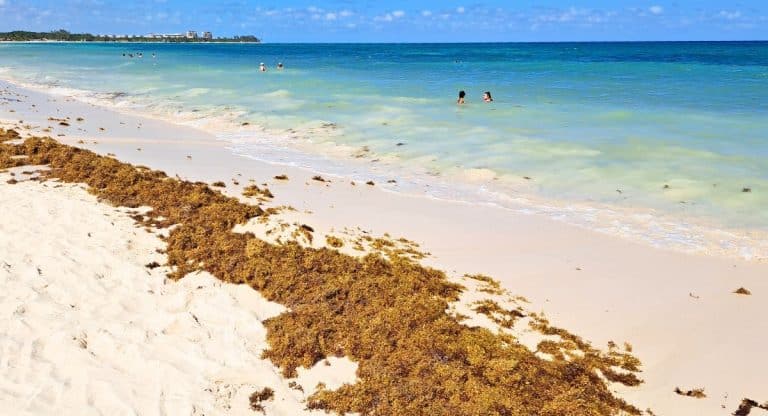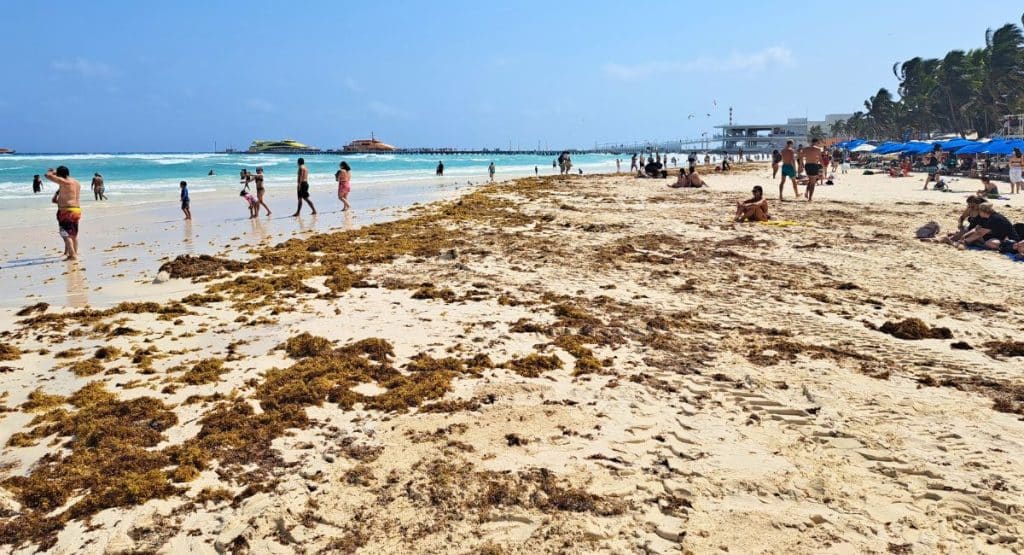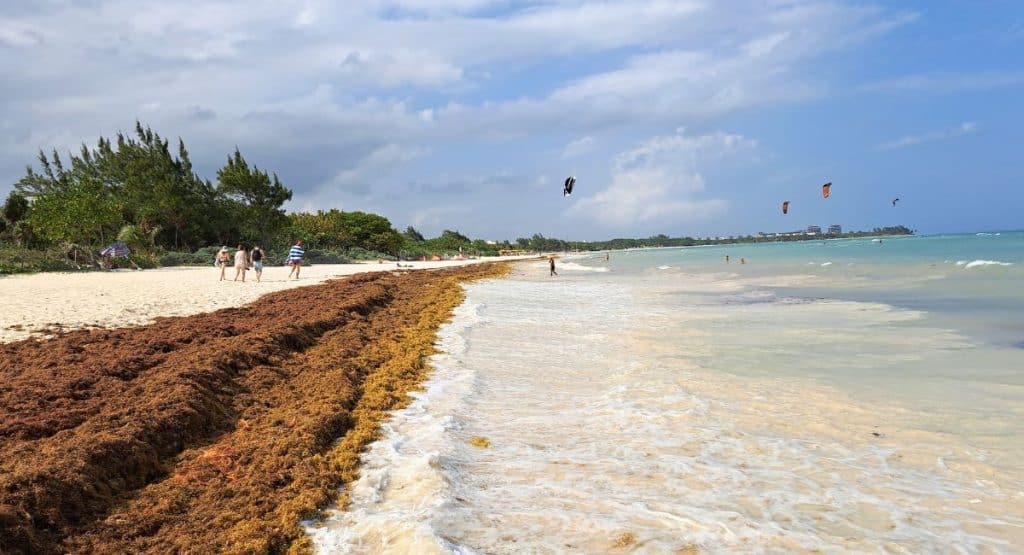Playa del Carmen beaches will see the arrival of up to 300 tons of sargassum per day over the next few weeks, authorities announced Friday.
The seaweed alert, which was at a “very low” level from the end of 2023, had to be elevated to “low” last week, according to the Oceanographic Institute of the Gulf and Caribbean Sea, which is part of the Mexican Navy.
Although the main coastal stretches remain clean, an increasing number of beaches have already been affected by the arrival of large amounts of sargassum, as reported by Traveling Lifestyle journalists and members of our Mexico sargassum monitoring FB group. However, this is about to change.
Rising temperatures and an anticyclone featuring southeastern winds in the Caribbean will begin to have visible effects on the number of seaweed tones washing ashore over the next few weeks.
“We know from experience that higher temperatures are correlated to the quantities of sargassum that will arrive. So, we are prepared to increase the collection, because from today the arrival will definitely begin to intensify,” María de Lourdes Várguez Ocampo, Secretary of Sustainable Environment and Climate Change of Solidaridad, told reporters.
To do so, every morning, Federal Land Maritime Zone (Zofemat) cleaning teams collect the algae from the beaches, although it’s impossible to remove it from the water.
Some ocean anti-sargassum barriers are expected to be set by the end of the month.
“I’ve contacted one of Semar captains to find a space to accommodate the barriers and keep them protected,” said Lili Campos Miranda, President of Soledad Municipality.
Travelers must be aware that this new “natural” phenomenon will have an inevitable impact on their beach experience. And most importantly, it will only get worse until major international actions are taken.
It’s crucial to keep yourself informed about the changing situation. Some beaches can be clean today but dirty tomorrow and vice-versa.
A Regional Issue
Sargassum in Mexico is more than an aesthetic problem affecting tourism. It is also further stressing the coral barrier, suffocating turtle nesting sites and destroying mangroves, which are vital nurseries for marine species.
The daily alga removal with heavy machinery has resulted in eroded beaches that have started to affect local fishermen.
According to a study conducted by Marine Pollution Bulletin, 2018 animals from 78 wildlife species were unable to fight back and died during the last sargassum season.



